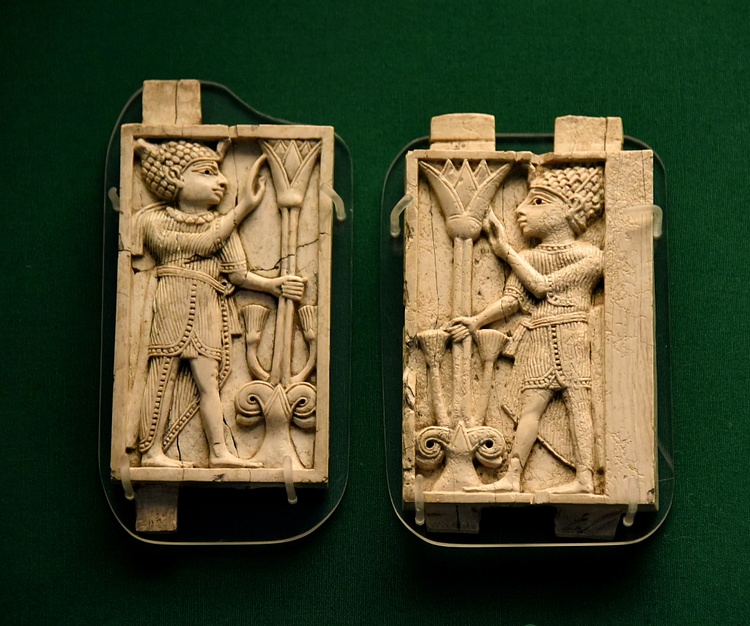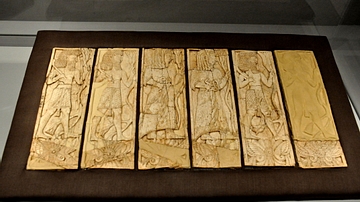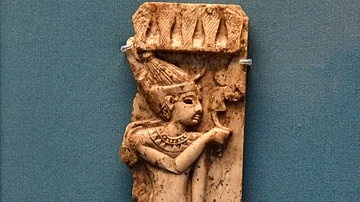Server Costs Fundraiser 2024
Illustration
Two panels from a much larger composition, each showing a youth dressed in Egyptian royal costume grasping a tree formed by a lotus flower arising from a double volute. On the front of the lower right-hand tenon of the right ivory panel, there is an incised inscription in West Semitic script. Excavated by Sir Henry Layard; acquisition date 1848. Phoenician style. Neo-Assyrian Period, 9th to 8th centuries BCE. From the doorway between Rooms V and W of the North-West Palace at Nimrud (ancient Kalhu), Mesopotamia, modern-day Iraq. (The British Museum, London).
About the Author
Cite This Work
APA Style
Amin, O. S. M. (2016, September 10). Nimrud Ivory Panels of Two Egyptian Kings. World History Encyclopedia. Retrieved from https://www.worldhistory.org/image/5650/nimrud-ivory-panels-of-two-egyptian-kings/
Chicago Style
Amin, Osama Shukir Muhammed. "Nimrud Ivory Panels of Two Egyptian Kings." World History Encyclopedia. Last modified September 10, 2016. https://www.worldhistory.org/image/5650/nimrud-ivory-panels-of-two-egyptian-kings/.
MLA Style
Amin, Osama Shukir Muhammed. "Nimrud Ivory Panels of Two Egyptian Kings." World History Encyclopedia. World History Encyclopedia, 10 Sep 2016. Web. 26 Jul 2024.








